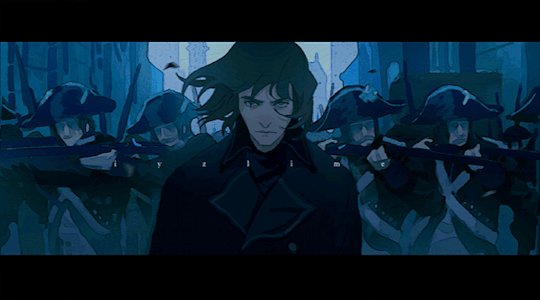Chronic reblogger. Opinions are my own. Will post once you call my name three times in the mirror with a candle and the lights offhttps://archiveofourown.org/users/Alienpixels
Don't wanna be here? Send us removal request.
Photo




miscellaneous Saint Just and a random Fouché
443 notes
·
View notes
Photo

Eleanor of Aquitaine: a fashion icon of her days

Eleanor of Aquitaine enjoyed dressing elegantly in fine clothes, often of silk embroidered in gold or silver thread, and she became a fashion icon in the Medieval Europe.
Having grown up at the splendid and majestic court of Aquitaine, Eleanor always loved luxurious and exquisite jewelry, and her collection of pieces of jewelry, including massive necklaces and jewelled circlets to hold in place veils that all married women wore in the 12th century.

Bernard of Clairvaux, a French abbot, harshly criticized Eleanor’s dresses and manners when she was the Queen of France. We have a detailed description of one of Eleanor’s dresses she wore in the period.
Bernard of Clairvaux wrote about Eleanor’s appearance:
“The garments of court ladies are fashioned from the finest tissues of wool or silk. A costly fur between two layers of rich stuffs forms the lining and border of their cloaks. Their arms are loaded with bracelets; from their ears hang pendants, enshrining precious stones. For headdress they have a kerchief of fine linen which they drape about their neck and shoulders, allowing one corner to fall over the left arm. This is the wimple, ordinarily fastened to their brows by a chaplet, a filet, or a circle of wrought gold.”

Bernard of Clairvaux’s description coincides with the one given by Geoffrey de Vigeois, who also condemned the outlandish and vulgar French court fashions in the period when Eleanor was King Louis VII’s wife. Of course, conservative French courtiers, all the more abbots, couldn’t like Eleanor’s frank courtly manners and frank clothes, which were fashionable in Aquitaine and which she was accustomed too.

When Eleanor of Aquitaine and Louis VII were in Palestine on the Second Crusade, there was an outrageous tale about Eleanor and her ladies, which might have originated from the eyewitness account of a Greek observer, who described Eleanor and her ladies as being dressed like Amazons on their way to the Holy Land.
Benoit de Saint-Maure dedicated his Le Roman de Troie (The Romance of Troy), a medieval retelling of the epic theme of the Trojan War, to Eleanor, in which he described Eleanor and her Amazons as riding into battle on a fine Spanish horse caparisoned with “a hundred tiny golden twinkling bells“ and armed with "a hauberk whiter than snow,” a sword, a lance, and a golden shield bordered with rubies and emeralds. She and her Amazons let “their lovely hair hang free.”

In 1154, Eleanor of Aquitaine and her second husband, King Henry II of England, were crowned and consecrated with pomp and splendor. Unfortunately, we don’t have the detailed description of Eleanor’s coronation gown, but, according to Alison Weir, a Victorian biographer would have dressed her in:
“a wimple or close coif with a circlet of gems over it; her kirtle or close gown has tight sleeves and fastens with full gathers just below the throat, confined with a rich collar of gems” and over this was added “an elegant pelisson, bordered with fur.”

The impact of Eleanor’s great tastes on clothing style in England was enormous as she introduced fashions, fabrics, and etiquette from more cultured and sophisticated court. Women’s clothing became richly ornamented and increasingly elaborate.
Eleanor’s effigy of at Fontevraud Abbey shows her gown covered with diagonal bars of gold, in the triangles of which there are gold crescents placed from point to point, and no doubt other ladies of her time had their emblems or badges embroidered into their gowns.

Eleanor brought some of well known Aquitanian traditions into English fashion.
A bliaut was a rich, full overgown made of fine silk, which tightly fitted the bodice and down to the hips; it was worn with a decorate belt and an ornamental girdle. Wearing bliaut was a new highly fashionable trend at the royal court.

The bodice of bliaut was split down on either side from underarm to hip and attached with ribbons, which made gown envelop the body tighter.
The skirt was cut wide, falling down to feet freely, in light folds. Bliaut sleeves were tight from shoulder to elbow, then flared out into enormous cuffs, amusingly long enough to drag on the ground; sleeves were knotted to make them more manageable in a shorter form.

Finest silks from the Middle East were readily available throughout Europe, and Eleanor used silks of various palettes for her gowns; silks were often costly embroidered in gold, silver, or metallic threads.
According to historians, there was a striped fabric called ray, but it wasn’t widely used at Henry and Eleanor’s court. Woven in Wiltshire, linen was used for women’s headdresses and for undergarments for both sexes. Velvet would not be invented until the fifteenth century.

Before Eleanor of Aquitaine, the following hairstyles and headdresses were popular in England after the Norman Conquest:
Couvre-chef, which was a new name for the head-rail after the Norman invasion. The couvre-chef style was wear hair long, sometimes to point of having to be knotted off the ground, and tended to hang down on either side of the face, worn with a circlet to hold it in place.
Hair uncovered. By 1125 women began to appear in public with their hair uncovered, usually worn parted down the middle and plaited in various ways.
Extreme Length, which echoed in sleeve length. At times, the illusion of long hair was aided with fake hair, ribbons, silk tubes with tassels, and attached metal cylinders.

Eleanor of Aquitaine brought new hairstyles and headdresses in England.
Barbette was supposedly introduced by Eleanor of Aquitaine. It was a band of linen encircling the face and pinned into place. At first it was only worn by royal ladies with a circlet or coronet, but over time this hairstyle was eventually adopted by all classes.

Wimple appeared approximately in 1190, by the time when Henry II was already dead. In this headdress, a long fine linen or silk was draped underneath the chin, across the throat, and the ends were pinned at the crown of the head. It was always worn together with a long veil and usually a circlet.

Sources:
Eleanor of Aquitaine: By the Wrath of God, Queen of England, Alison Weir
Eleanor of Aquitaine. A Biography Book, Marion Meade
Queen Eleanor, Independent Spirit of the Medieval World: a Biography of Eleanor of Aquitaine, J.B. Lippincott
1K notes
·
View notes
Text
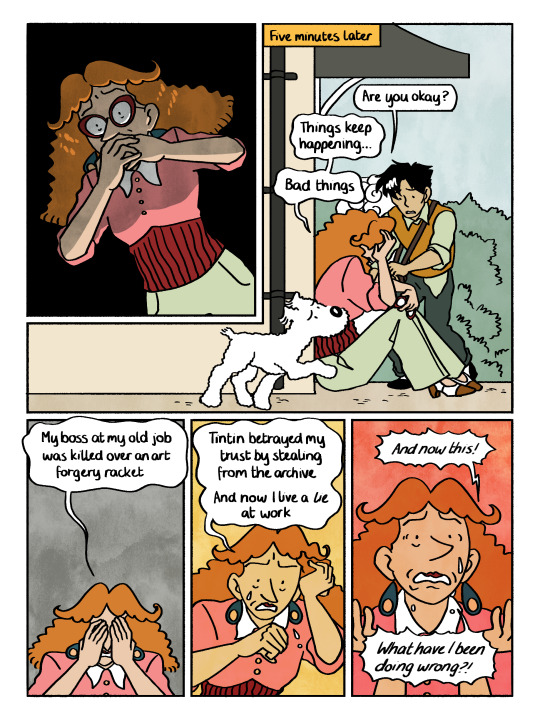


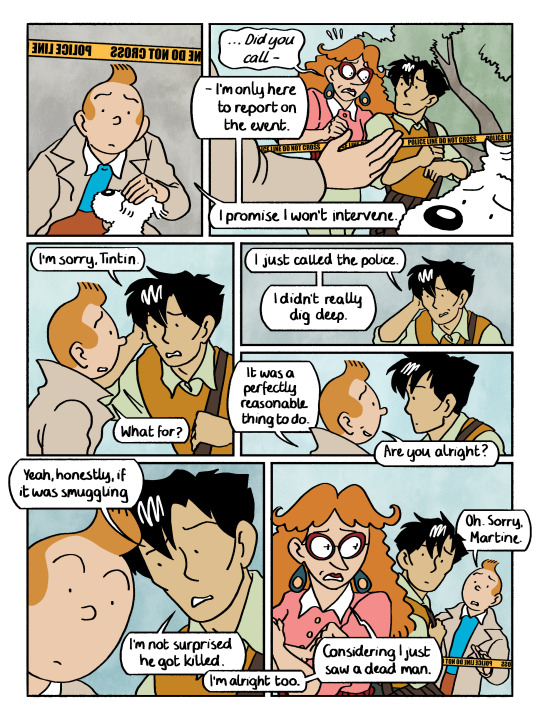
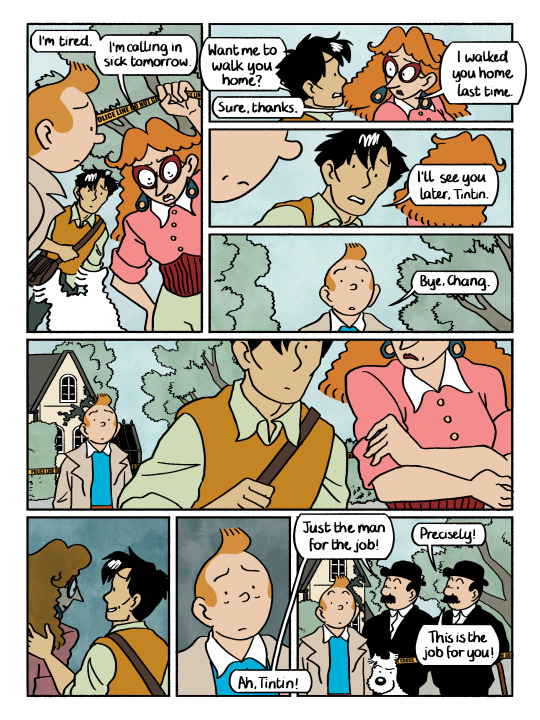

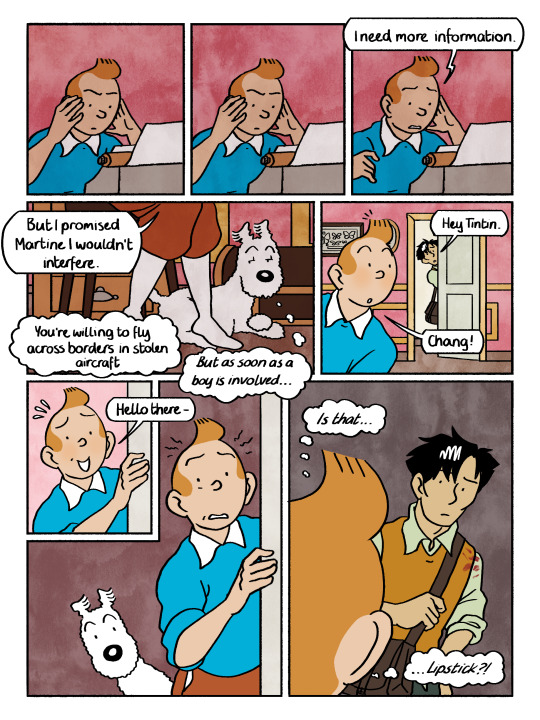
Police tape and a blank page. I know police tape was invented in the 1960s but ssshhhhhhhh
Follows on from here, from my story The Fractured Urn. I know this story is a slow burn but I promise things will ramp up! Thank you for your patience.
1K notes
·
View notes
Text

Quick little sketchy…Caesar finally got the family he wanted…
894 notes
·
View notes
Text










[The Day We First Met] 1 / 30 / 1939
Drew this late October of last year, and wasnt really happy with it but since tomorrow is the first day that caejose met I wanted to at least share this interaction I think would happen at the end of their first day meeting…😅 #caejose
3K notes
·
View notes
Text


How I met your father?
Happy 5th anniversary🎉🤍
2K notes
·
View notes
Text



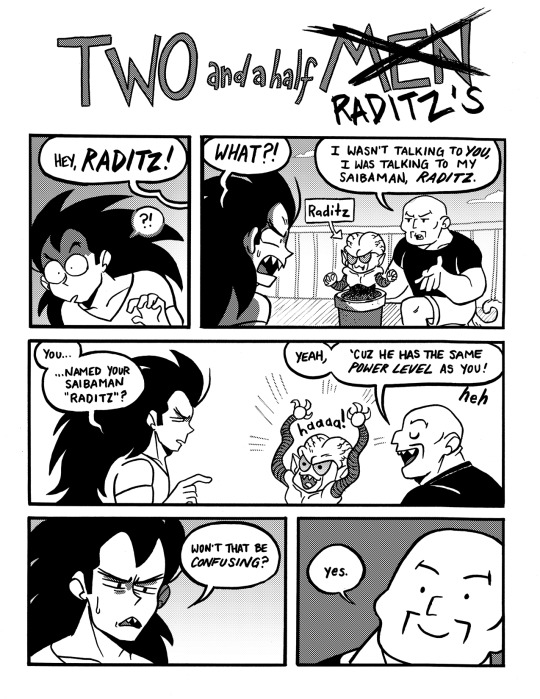





"Two & A Half Raditz's"
Here it is!! My short slice-of-life comic about Raditz and Nappa being roommates. I started with the final punchline ("Shut up and eat your Raditz") and worked entirely backwards from there.
Plus: a bonus epilogue strip!
(A side note: I'm sure I'll pick up doing more Raditz comics if the whim strikes me, but if you like roommate comics, I have a years' worth of strips over at @dibbitandboo-two )
2K notes
·
View notes
Text

“I’m on my break.” / “From what?” / “I dunno.” / “Fair enough.”
holding HFIL raditz in both hands
197 notes
·
View notes




